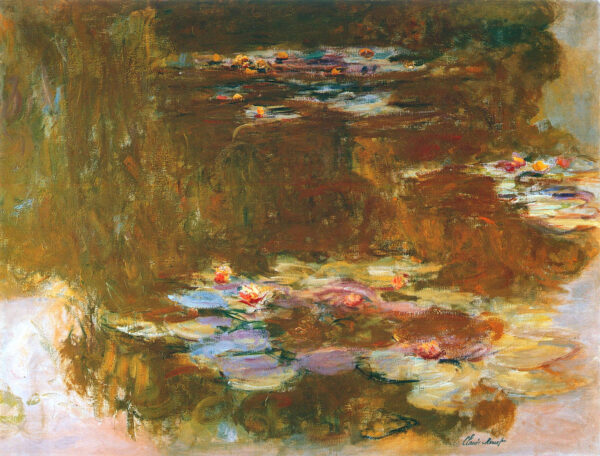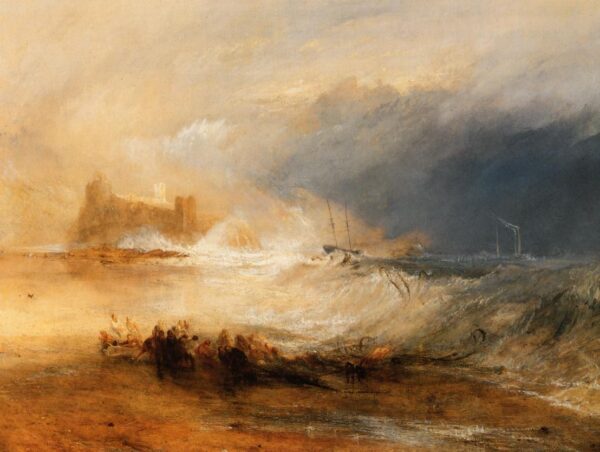Create an Artist Brand and Start Selling More Work in 10 Steps
As an artist, you might think your artwork is your brand. But achieving success as an artist is as much about you as it is about your work.
Consider premium brands in sportswear and other industries. Their success (and price tag) often has very little to do with the raw ingredients. You probably use the same paint and canvas as many blue-chip artists commanding six figures for their work. Branding can be the difference between fame and fortune and not being able to cover the cost of your materials.
Is branding more important than talent?
Of course, part of an artist’s success lies in what you do with a brush or a pencil or so on. But with a million other starving artists out there, your brand is what gets your work recognized. There are plenty of examples of artists of little means whose work commands priceless sums after their death, but it would be so much better to enjoy the fruits of your labor while you can spend it!
What’s in a brand?
There are two ingredients to your brand: you and your work. Before you do anything else—and that includes creating a logo or a website—you need to identify what your brand is.
How do you identify your artist brand?
Sit down and ask: what is my approach to art? Enlist a friend to do a question-and-answer session with you and record it. Play it back and take notes of what you find yourself agreeing with. This list of questions below will help you define your art brand.
1. Who are you?
Your biography is a vital part of your success. This isn’t just where you went to art school but should take in account all aspects of your life. Impressionist Vincent van Gogh didn’t sell a single painting during his lifetime (except to friends). Today his work is priceless. And his brand is as much about sunflowers and the color yellow as it is about cutting off his ear.

But before you reach into the kitchen drawer, there are plenty of other ways to create an outstanding biography.
2. What is your art about?
This might be obvious from the work on show, or it might be more subtle—or even a mystery (which is a subject in itself). You need to be able to answer this question in a simple sentence.
3. What does your art look like?
There needs to be clarity and consistency in your work. Part of your brand is for people to recognize your work without looking at the signature. It would be hard not to know a Monet when you see it. This doesn’t mean you have to paint only landscapes, but your style of painting, the size of your paintings and even the color palette you use will help identify your work.
This doesn’t mean you shouldn’t try new styles or mediums, but it might not be a big part of your brand outside of the studio until you’ve developed it.
4. What are your intentions?
How do you want viewers to feel about what they see? Are you trying to create a response, emotional or otherwise, or should it simply be decorative? And does it matter?

5. What is your process?
Your process is how you make your art. Do you begin with sketching or photography, and why do you work that way. How is your style and approach central to your perspective on art? For example, en plein air painters (painters who work outside) would consider the atmospheric environment as much a part of their work as the view. The works of Monet, the master of en plein air, are instantly recognizable, whether they feature his beloved water meadows or more distant vistas. He painted around 250 works of his gardens in Giverny.
6. Who or what are your influences?
Our influences can expand beyond artists we admire or emulate. It could be someone working in the same medium as you or it could be something completely different. Influence can come from many different sources, even something a simple as a quote from literature or history.
Your influence is also a good piece of information to include in your artist statement. If you have’t crafted on yet, check out our blog for tips on writing an artist statement.
7. How important are your mediums and materials
You may have used the same way of working for many years or it may be something that has developed over a very long time.
Consider how you chose the materials you work with and how they help express the style and subject of your work. For example, if you use oil paint, you may talk about texture and depth. If you use egg tempera, it may be more about luminosity. Or if you use household paintbrushes and window wipers to smear paint across large boards, it may be about controlling your mark-making.
8. How has your work developed and where is it going?
A lecturer at my art school once responded to my desolation at a painting failing to express all I wanted it to. Her response was definitive: “If you had painted the perfect painting that expressed everything you wanted it to, you would need to find a new job. Get used to failure.”
Our work will change over the years as we develop new approaches and experiment. When developing your brand, consider where your work is going, especially if you have started using different mediums or completely changed your style.

9. Does your work have a signature?
I don’t mean a scribble you put at the end of your canvas or the scratch you put into the clay (although that’s important to add too). In branding, your figurative signature is something about your work that makes it your work. It may be a particular color (think of van Gogh’s yellows), it may be the undulating shapes of Barbara Hepworth’s giant stone sculptures or a simple mark-making style that is all your own (I return to the window wipers above). Look at your work over a set period of time and ask: What makes this work mine?
Good examples include Jackson Pollock’s splatter paintings with that instantly recognizable mark-making and his favored colors of reds, greys and blacks. His contemporary Mark Rothko was a color-field painter who created soft-edged geometric work that usually contained a horizon. Go back a few centuries and it was the chiaroscuro (use of light) that made Caravaggio (1571–1610) stand out from his Renaissance contemporaries.
10. How does your gallery present you?
If you are lucky enough to have one, your gallery is your brand ambassador in the same way your website social media channels and any other marketing material should be. The good news is that part of the reason they take that 50 percent commission is the marketing and publicity they can generate. To do this, they will have developed your brand through your style, medium and biography. See what they’ve done and take some of the pertinent points.
Bonus question: Who is your ideal collector?
Making a living as an artist does mean making a sale. The great J.M.W. Turner would hide behind doors to hear what visitors thought of the work displayed on his walls and take their opinions into his studio to influence future work.
Can you see the kind of person who will have your work on their wall? Is it a billionaire with enormous empty walls or simply someone who likes the artwork or what it depicts? Is your work designed for an expansive backdrop or intimate private spaces? Solving this mystery will help you target the right people.

Now it’s time to create
Once you have answered some basic questions about your art brand, it’s time to create a logo or signature and develop your website, online shops and social media channels that will make you and your work instantly recognizable.
Happy selling!
